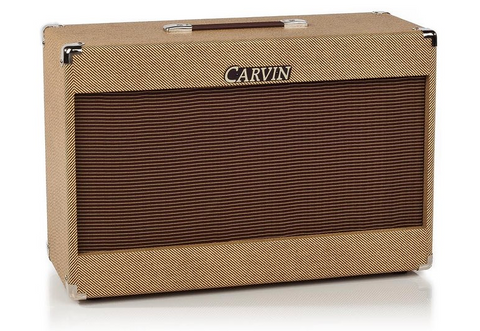-
Audio
-
Guitar
-
Bass
-
Blog
-
SALE
- Financing
- Support
- SINCE 1946
January 27, 2017

In the first part of this article we learned the basics of configuring extension speakers- as long as you know the total impedance load of your cabinet(s).
So How Do You Calculate the Total Impedance Load?
I'm so glad you asked! Because when it comes to amplifiers they have a limit as to how low the impedance can be without effectively shorting the output, and there is a practical limit to how high it can get and still utilize your speakers efficiently. When you plug that extra cabinet straight into your amp via the extension speaker output you are "parallel-wired" because the jack connects the positive side of both speakers to the positive terminal of the amp output, and the negative side of both to the negative terminal in parallel (remember to double-check your extension speaker jack is wired in parallel- it usually is). We know the total impedance will go down, but how do we calculate the actual load? The formula for the total load of multiple cabinets in parallel is:
Total impedance (Zt) = (Za x Zb) / (Za + Zb)
(Where Za and Zb equal the impedance of each cabinet wired in parallel).
It almost sounds like you might have to fire up that calculator app on your smart phone, and indeed you might at some point. But fortunately most commercially made extension speakers are standard impedances of 16 ohm, 8 ohm or 4 ohm, so a lot of the time you are connecting two cabinets of the same impedance together. When the loads are the same the formula simplifies itself and you only need to divide the impedance of the cabinets by the number you are connecting in parallel:
Zt = Zc / Tc
(Where Zc is the impedance of the cabs, and Tc is the number of cabs wired in parallel).
If you want to add a Carvin Audio 212E cabinet to your Carvin Audio Belair combo, you have an internal load (of the amp's built in speaker pair) which matches the impedance of the extension cabinet (both are 8 ohm). Your total load is 4 ohms (8 ohm / 2 cabinets). Using a pair of 4 ohm cabinets like the BR410 with your BX700 bass amp head yields 2 ohm (4 ohm / 2 cabinets = 2 ohm). Sometimes you will encounter a 4x12 cabinet for guitar wired to 16 ohm, and two of those in parallel will have a total load of 8 ohm.
Where does the series-wired circuit come into play?
In all of our former examples, we used self-contained speaker cabinets and did our calculations based on the impedance rating of the entire cabinet. It would be impractical to daisy-chain (parallel) multiple individual speakers. While a very small number of amps offer series-wired extension jacks, series-wiring is almost always used within an individual cabinet (see note below). It is pretty common for the musician to want cabinets with two to four speakers in them, so the designer might wire a pair of 8 ohm speakers in series inside the cabinet to get a convenient total load of 16 ohm. By using parallel wiring to lower the total load, and series wiring to increase it, you can achieve some control over the total output impedance. This is especially useful with multiple speakers where the total load in parallel is less than the minimum load-rating of the amplifier. Some 4x12 cabinets for guitar (like the Carvin Audio VX412T), utilize two pairs of 16 ohm speakers wired in parallel to offer stereo 8 ohm inputs, but also have a switch that puts both pairs in series so you can use the cabinet in mono at 16 ohm.
The VX412T offers stereo 8 ohm inputs or a mono 16 ohm input
The formula for speakers wired in series is simple:
Zt = Za + ZbOctober 02, 2025
Discover the features and performance that the WG6 Wireless Guitar/Bass System has to offer. The WG6 Wireless Guitar/Bass System is designed to give you the wireless freedom you have been looking for and the simplicity to make your life as a working musician easier. Advanced wireless technology, multiple channel capability, premium audio processors make the WG6 the leader in compact wireless instrument systems. Defined and detailed low frequency response makes this system especially useful for bass players. The WG6 works with both active and passive instruments and is perfect for both electric and acoustic guitar/bass.
March 28, 2025
At any time at any gig, something is bound to go wrong and you may need a tool to get you back up and running. Here are a few basic tools you should bring to every gig.
January 09, 2025
I once asked blues legend Walter Trout why he still plays his well-worn vintage Strat. The technology exists to digitally scan the guitar and make very accurate replicas. His response was he could leave it at home, but then it will never be played. Plus, someone could steal it from his home. At least the guitar is with him and he has the pleasure of playing it. But this may not be the same for everyone.
Sign up to get the latest on sales, new releases and more…
NoFraud Frequently Asked Questions
"Make a joyful noise unto the Lord all of the earth; make a loud noise and rejoice and sing praises. Sing to the Lord with the harp and the voice of the psalm." - Psalm 98:4-5
© 2025 Carvin Audio.
Carvin Corp.
POS and Ecommerce by Shopify
